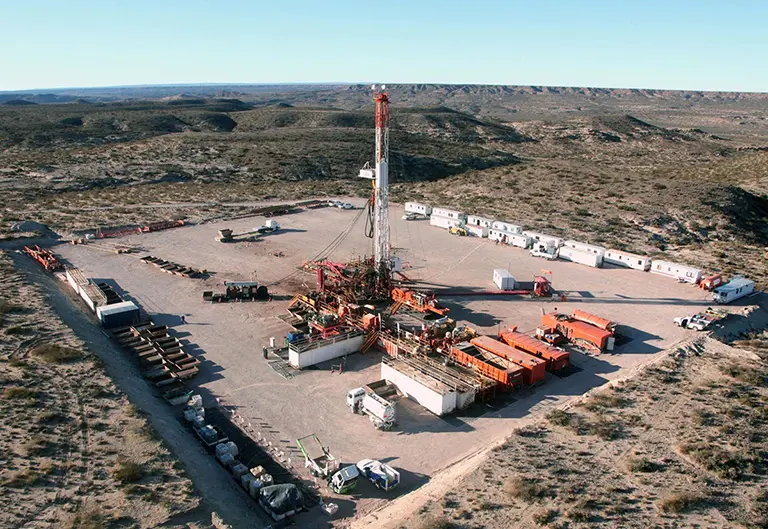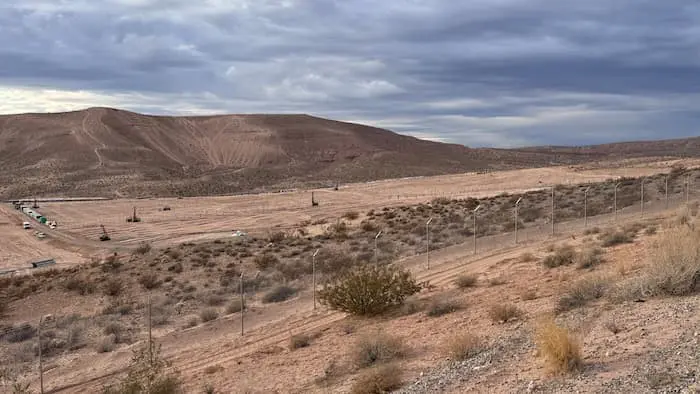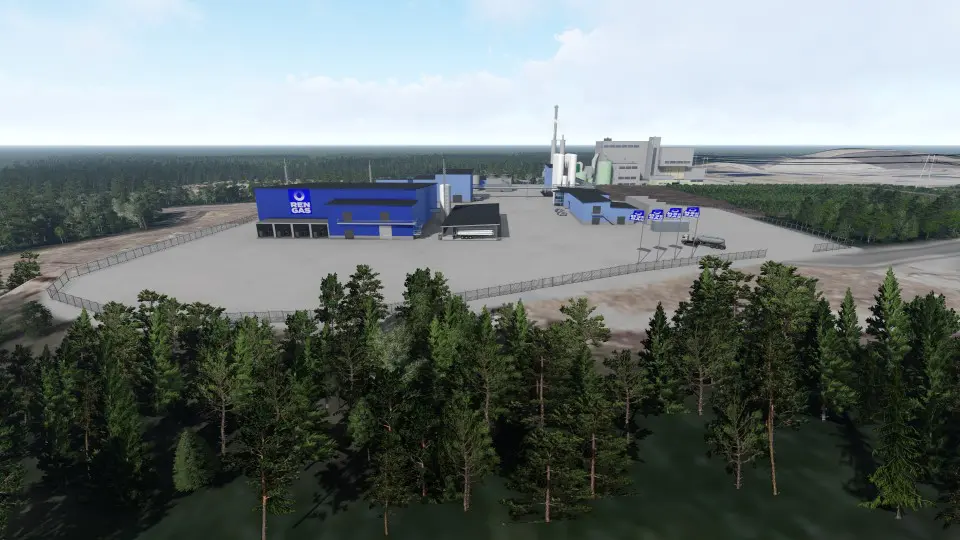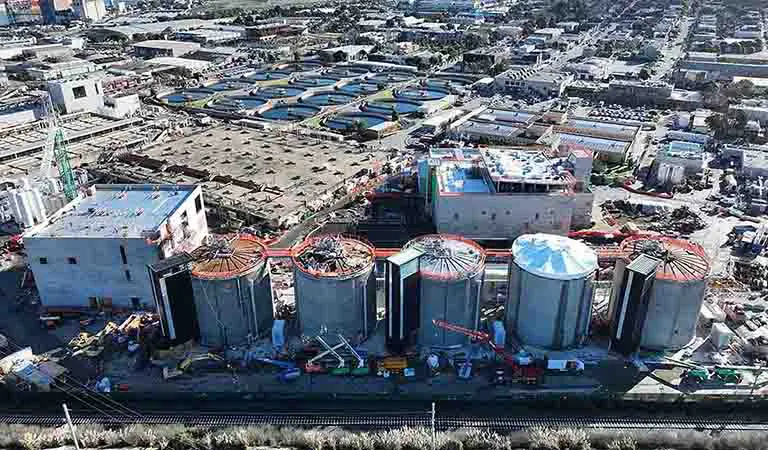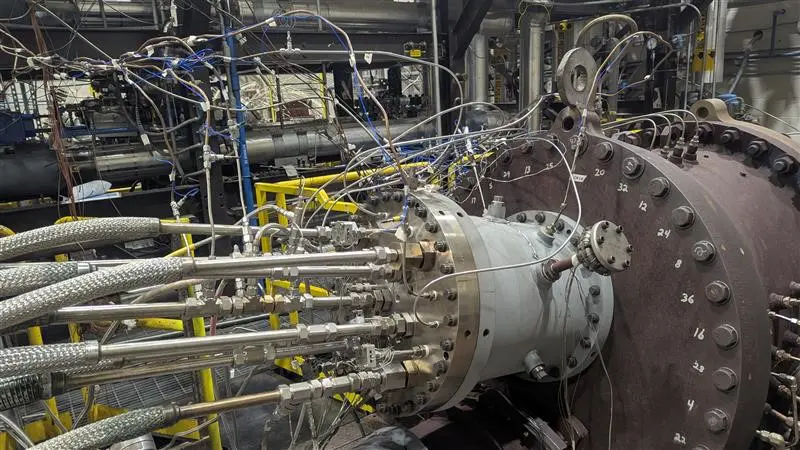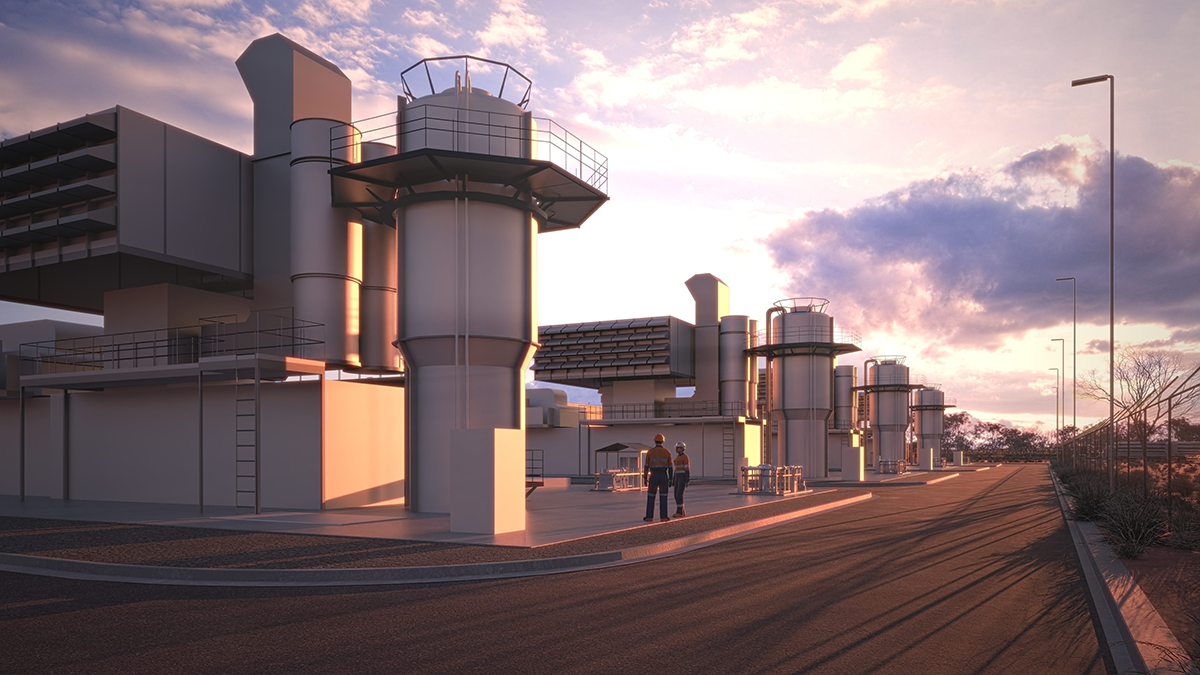
Promise Delivered: DOI Permits 25 GW Of Clean Energy Projects Ahead Of 2025 Target
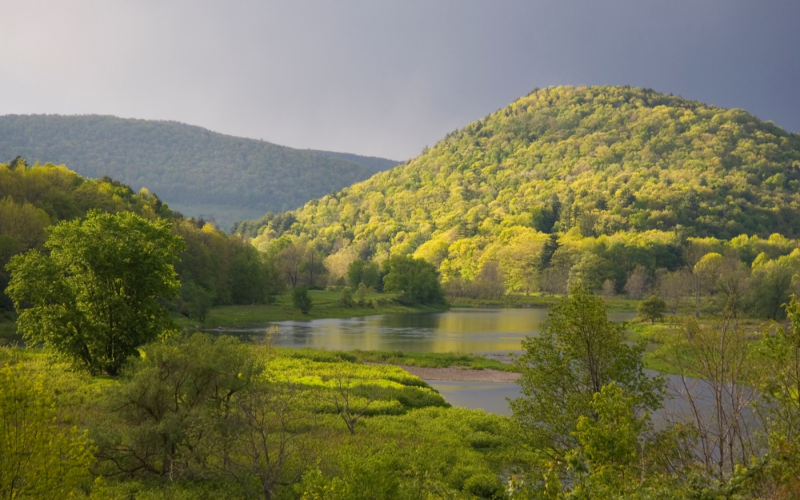
The Biden-Harris administration announced a series of a changes to help protect biodiversity, preserve lands, and ensure a successful energy transition. The moves were a step in the right direction, but more actions are needed to achieve President Biden’s goal of creating a carbon pollution-free power sector by 2035.
Goal Achieved
The Department of the Interior (DOI) and the Bureau of Land Management (BLM) have worked to review and approve dozens of new clean energy projects, including solar, wind, and geothermal projects, as well as interconnected generation interconnect (gen-tie) lines that are vital to clean energy projects proposed on non-federal land.
DOI Secretary Deb Haaland announced that the DOI has now permitted more than 29 GW of clean energy projects — surpassing a major milestone ahead of 2025 — enough clean energy to power more than 12 million homes across the country. This includes solar, wind, and geothermal projects, as well as gen-tie lines on public lands that are essential for connecting clean electricity projects on both federal and non-federal land to the grid.
“Surpassing our goal of permitting 25 GW of clean energy by 2025 underscores the significant progress we have made in helping build modern, resilient climate infrastructure that protects our communities from the worsening impacts of climate change,” said Secretary Haaland. “The Interior Department will continue to advance projects that will add enough clean energy to the grid to power millions more homes and help ensure a livable planet for future generations.”
According to the DOI, the announcement includes the approval of more than double the number of projects than were approved during the previous administration. In addition to specific project approvals, the DOI has also leased eight new areas in solar energy zones with the capacity to generate nearly 2.5 GW of additional clean energy.
As the DOI continues its momentum to spur a clean energy future, the BLM is currently processing permits for an additional 66 utility-scale clean energy projects proposed on public lands in the western United States. These projects have the combined potential to create thousands of good-paying jobs, add more than 32 additional GW of renewable energy to the western electric grid, and power millions more homes. The BLM is also undertaking a preliminary review of about 200 applications for solar and wind development, as well as more than 100 applications for solar and wind energy site area testing. The BLM continues to track this clean energy permitting progress through an online dashboard.
Finalizing The Renewable Energy Rule
The department also announced the update of its renewable energy regulations to promote the development of solar and wind energy on public lands. The final Renewable Energy Rule will reduce capacity fees for these projects by 80% and facilitate development in priority areas by streamlining application review, delivering greater certainty for the private sector, and the opportunity for more clean energy for American households.
The Energy Act of 2020 authorized the BLM to reduce acreage rents and capacity fees to promote the greatest use of wind and solar energy resources. The BLM initially reduced these fees through guidance in 2022. Today’s final rule codifies further reductions, improving financial predictability for developers pursuing long-term projects on public land.
The final Renewable Energy Rule will facilitate development in identified priority areas for wind and solar energy while maintaining appropriate flexibility to ensure a fair return for the use of public lands. It expands the BLM’s ability to accept leasing applications in these priority areas without first going through a full auction but retains the BLM’s ability to hold competitive auctions where appropriate.
The final rule continues the Biden-Harris administration’s commitment to creating American manufacturing jobs while helping to build a clean energy economy, including financial incentives for developers to use project labor agreements and domestic materials. The BLM sought comment on these additional incentives in last year’s proposed rule and developed the final provisions following public feedback, including from labor unions and a wide range of clean energy industry stakeholders.
The rule also complements the BLM’s ongoing efforts to advance responsible clean energy development by updating the Western Solar Plan. The BLM is currently taking comment on a draft analysis of the Utility-Scale Solar Energy Programmatic Environmental Impact Statement, with the goal of streamlining the BLM’s framework for siting solar energy projects across the West to support current and future national clean energy goals, long-term energy security, climate resilience, and improved conservation outcomes.
“Our public lands are playing a critical role in the clean energy transition,” said Acting Deputy Secretary Laura Daniel-Davis. “Finalizing the Renewable Energy Rule is a significant milestone that will allow the Interior Department to continue leading the way on renewable energy while furthering President Biden’s commitment to building a clean energy economy, tackling the climate crisis, protecting lands and waters, promoting American energy security, and creating jobs in communities across the country.”
Fully Operational California Solar Projects
In another step toward achieving President Biden’s vision of a fully carbon pollution-free power sector by 2035, the DOI announced that the Arica and Victory Pass solar projects are both fully operational. Located in eastern Riverside County, California, Arica and Victory Pass are the first projects approved under the Desert Renewable Energy Conservation Plan (DRECP). With the completion of these two solar projects, the BLM has also surpassed 10 GW of renewable energy generation from projects on public lands.
The two projects represent a combined infrastructure investment of about US$689 million, will generate US$5.9 million in annual operational economic benefit, provide power to nearly 139,000 homes, and add up to 465 MW of clean energy generating capacity and 400 MW of battery storage. The department issued final approval for construction of the Arica and Victory Pass solar projects in 2022.
The DRECP is a landscape-level plan created in collaboration with the State of California for more than 22 million acres (8.9 million ha), focused on 10.8 million acres (4.4 million ha) of public lands, in the desert regions of seven California counties that balances renewable energy development with the conservation of unique and valuable desert ecosystems and outdoor recreation opportunities. To approve these sites for renewable energy projects, the department and the BLM worked with Tribal governments, local communities, state regulators, industry, and other federal agencies.
The BLM also announced the beginning of construction for the Camino Solar project in Kern County, California. The 44-MW solar photovoltaic facility is expected to power nearly 13,400 homes. The project will employ around 150 people during peak construction, include a 34.5-kV underground electrical collector line, and connect to the existing Southern California Edison Whirlwind Substation through the Manzana Wind Substation and associated 220 kV generation-tie line.
Finalized Endangered Species Act Revisions
The DOI announced that the US Fish and Wildlife Service has finalized Endangered Species Act (ESA) revisions to improve participation in its voluntary conservation programs. The revisions promote native species conservation by clarifying and simplifying permitting under Section 10(a) of the ESA, encouraging more resource managers and landowners to engage in these voluntary programs.
President Biden’s America the Beautiful initiative set the nation’s first-ever goal to conserve and restore at least 30% of US lands and waters by 2030. The 10-year, locally led and nationally scaled initiative lifts up efforts to protect, conserve, connect, and restore lands, waters, and wildlife. One of the initiative’s goals is to enhance wildlife habitat and improve biodiversity potentially preventing listings and assisting with species recovery through voluntary measures.
The revisions improve implementation of the conservation programs associated with the issuance of enhancement of survival and incidental take permits under Section 10(a) of the ESA. One way the service achieves this is by combining safe harbor agreements and candidate conservation agreements with assurances into one agreement type called a conservation benefit agreement. The service also adds flexibility to allow permits for both listed and non-listed species and clarifies the requirements for complete applications.
These revisions, which will increase efficiency by reducing the time and cost to develop and negotiate permit applications, will encourage more individuals and companies to engage in conservation benefit agreements and habitat conservation plans, generating greater conservation results overall. These revisions do not significantly change the current implementation of the Section 10 program or expand the requirements for species protections.
Section 10(a) of the ESA provides a voluntary mechanism for authorizing take of listed and non-listed species associated with beneficial conservation actions or otherwise lawful activities. With some exceptions, the law prohibits taking protected species unless authorized by a permit from the Service or the National Marine Fisheries Service.
The ESA was enacted in 1973 as a response to the declining populations of many species of animals and plants. The act was designed to protect and recover species at risk of extinction and to promote the conservation of ecosystems and habitats necessary for the survival of those species as well as the communities who rely on healthy ecosystems.
The ESA provides for the protection of ecosystems, the conservation of endangered and threatened species, and the enforcement of treaties related to wildlife preservation. According to the DOI, this law has been highly effective and credited with saving 99% of listed species from extinction. Thus far, more than 100 species of plants and animals have been delisted based on recovery or reclassified from endangered to threatened based on improved conservation status, and hundreds more species are stable or improving thanks to the collaborative actions of tribes, federal agencies, state and local governments, conservation organizations, and private citizens.
The final Section 10(a) rule published in the Federal Register on April 12, 2024, and is effective 30 days from publication.
Revised Oil And Gas Leading Regulations
The DOI announced a final rule to revise the BLM’s oil and gas leasing regulations, which it believes will ensure a balanced approach to development, provide a fair return to taxpayers, and help keep drilling activities from conflicting with the protection of important wildlife habitat or cultural sites.
The Fluid Mineral Leases and Leasing Process rule revises outdated fiscal terms of the onshore federal oil and gas leasing program — including for bonding requirements, royalty rates, and minimum bids — which will increase returns to the public and disincentivize speculators and irresponsible actors. The rule is the BLM’s first comprehensive update to the federal onshore oil and gas leasing framework since 1988, the first update to minimum bonding levels since 1960, and the first increase in royalty rates in more than 100 years.
The rule codifies fiscal provisions included in the Inflation Reduction Act and implements recommendations from the department’s Report on the Federal Oil and Gas Leasing Program.
“These are the most significant reforms to the federal oil and gas leasing program in decades, and they will cut wasteful speculation, increase returns for the public, and protect taxpayers from being saddled with the costs of environmental cleanups,” said Secretary Haaland. “Alongside the historic investments we are making through President Biden’s Investing in America Agenda to clean up orphaned oil and gas wells, these reforms will help safeguard the health of our public lands and nearby communities for generations to come.”
The rule will guide BLM efforts to focus oil and gas leasing in areas that are the most likely to be developed — areas with existing infrastructure and high oil and gas potential — lessening development pressure on areas that contain sensitive wildlife habitat, cultural resources, high recreational usage, or other special resources and values. This approach will provide transparency and clarity for industry, while better managing public lands for other important resources.
“This rule will give industry additional certainty about lease terms moving forward and give the public the certainty that their voices will be heard when the BLM is proposing areas for leasing,” said Principal Deputy Assistant Secretary for Land and Minerals Management Dr. Steve Feldgus. “It also addresses a number of longstanding Government Accountability Office [GAO] and Inspector General recommendations, ensuring we have a modern oil and gas leasing program that protects the public’s interests.”
The rule also updates minimum bonding amounts for federal oil and gas operations for the first time in more than 60 years, helping to ensure that taxpayers are not left with the bill for cleaning up orphaned wells. The GAO noted that the BLM is responsible for managing thousands of idled wells that pose a risk of becoming orphaned. The increased bonds better reflect the actual costs of reclaiming wells and will mean those costs are borne by oil and gas companies rather than taxpayers.
Key elements of the rule include:
- Bonding Requirements: The rule increases the minimum lease bond amount to US$150,000 and the minimum statewide bond to US$500,000, and it eliminates nationwide and unit bonds. The previous lease bond amount of US$10,000 — established in 1960 — no longer provided an adequate incentive for companies to meet their reclamation obligations, nor does it cover the potential costs to reclaim a well should this obligation not be met, leaving taxpayers at risk for the cost of cleanup. Bond amounts will be adjusted for inflation every 10 years.
- Protecting Wildlife & Cultural Resources: The rule helps steer oil and gas development away from important wildlife habitat and important cultural sites by establishing BLM’s preference to offer lands for lease that are close to existing infrastructure or have high potential for oil and gas production.
- Fiscal Terms: A number of fiscal terms are changed to reflect provisions of the Inflation Reduction Act, including:
- Royalty Rates for leases are set at 16.67% until August 16, 2032 — 10 years after enactment of the Inflation Reduction Act — then 16.67% will become the minimum royalty rate. Previously, the minimum royalty rate was 12.5%.
- Minimum Bids: The minimum amount companies can bid at auctions for federal oil and gas leases increases to US$10 per acre, up from US$2 per acre. After August 16, 2032, that amount will be regularly adjusted for inflation.
- Base, Or Minimum, Rental Rate: Leases will include a rental of US$3 per acre per year during the first two-year period beginning upon lease issuance, then US$5 per acre per year for the subsequent six years, and then US$15 per acre per year thereafter. After August 16, 2032, those rental rates will become minimums and are subject to increase. Previously, companies paid US$1.50/acre for each of the first five years of holding a lease, then US$2/acre for the next five years.
- Expressions Of Interest: The Inflation Reduction Act established a new US$5/acre fee for expressions of interest. The rule implements how the fee will be collected.
The announced final rule follows a proposed rule issued by the BLM last year. Based on more than 130,000 public comments received from a wide range of stakeholders, the BLM has finalized these key provisions with some technical changes, including adding inflation adjustment mechanisms.

